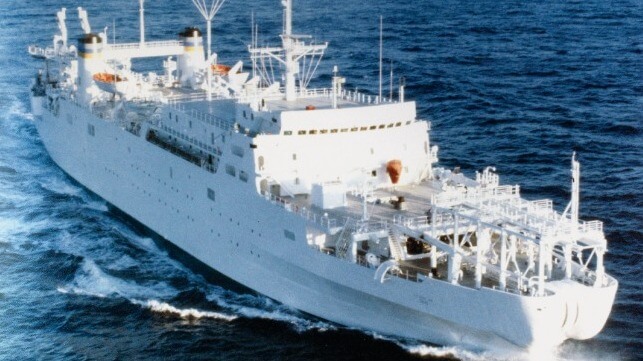Facing Threat From China's Subs, U.S. Navy Upgrades Subsea Surveillance

As the rivalry between the U.S. and China heats up in the Pacific, both sides have begun investing heavily in subsea sensing networks for detecting submarines. China's deep-sea listening program - known as the "Underwater Great Wall" or "Good Wind Ears" - is focused on its near abroad, reaching from the South China Sea to the U.S. sub base at Guam. The U.S. Navy's program, according to Reuters, will revitalize a naval intelligence program from the Cold War - the top-secret Sound Surveillance System (SOSUS), now known as the Integrated Undersea Surveillance System (IUSS).
After the end of World War II, the U.S. Navy's Office of Naval Research explored the potential of the deep sound channel - a layer in the deep ocean that can transmit sound over very long ranges. The Navy found that subsea hydrophones deployed in this layer can detect submarines from hundreds of miles away. Beginning in the early 1950s, hydrophone arrays and receiving stations were deployed up and down the U.S. eastern seaboard. The program was eventually extended out as far east as Iceland and as far west as the Aleutian Islands. Its best-known success was the detection of the sinking of Soviet ballistic missile sub K-129 in 1968, which led directly to the top-secret Glomar Explorer mission.
SOSUS was consolidated after the end of the Cold War, and computer automation and base closures reduced the program's footprint throughout the 1990s. Without a Soviet sub threat to monitor, listening stations became a less urgent need.
Today, the priorities are shifting back again. China is undertaking the largest military buildup since World War II, and it has become the largest naval power on earth. Its fleet includes six nuclear ballistic missile subs, which could threaten Guam, Alaska or Hawaii from near their home base on Hainan Island. This nuclear-armed fleet might expand to eight to 10 hulls by the end of the decade. These particular sub designs are believed to be noisy by modern standards - 25 decibels louder than the best U.S. attack subs, by one Chinese evaluation - which would make them good candidates for hydroacoustic tracking.
China also fields a growing fleet of attack subs, and it could have as many as 68 hulls by 2030. Its latest diesel-electric design is well-regarded for its stealth, and could pose a real threat to shipping in the event of a blockade of Taiwan, according to the Yorktown Institute.
Subs are dangerous because they are hard to find, defend against and destroy - but if they can be tracked, those tasks become much easier. The revival of the IUSS surveillance system could help offset China's numerical advantage in the South China Sea and the Strait of Taiwan.

that matters most
Get the latest maritime news delivered to your inbox daily.
Reuters first reported the revamp of IUSS, and the investments will go into several different priority areas. The U.S. Navy will modernize and upgrade the subsea cable arrays that make up the permanently-installed base of the system. It is also investing $3 billion for a fleet of seven new ocean surveillance ships, to be built by Austal USA and L3Harris. These ships will provide anti-submarine passive and active surveillance capability using towed-array sonar. Other components will include portable seabed-based sensors; unmanned drones; and AI technology to analyze the data from these elements, according to the report.
A spokesperson for Submarine Force U.S. Pacific Fleet could not confirm specific details, but told Reuters that "the systems have and will experience growth and recapitalisation as subsea technologies are developed and as defense priorities are updated."
